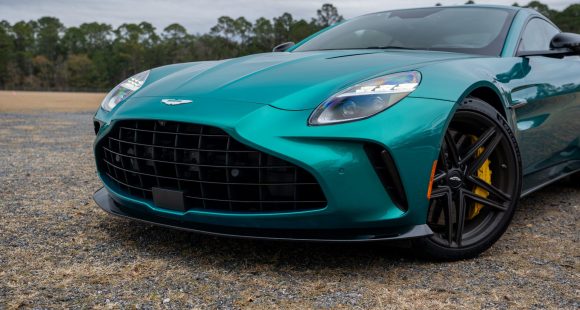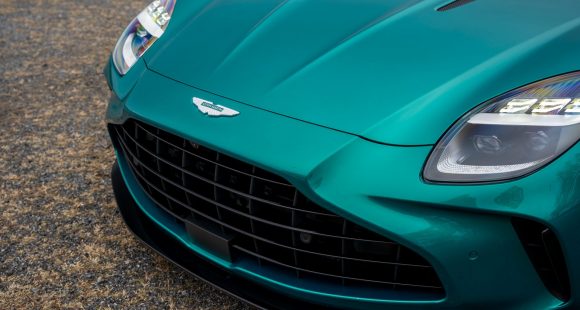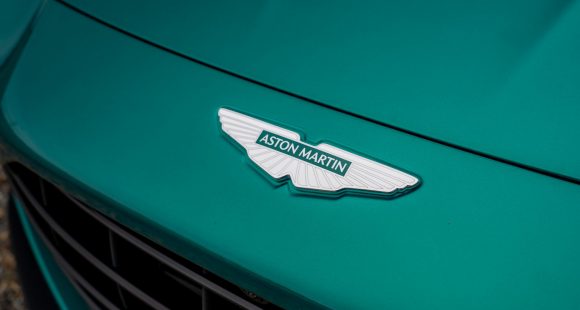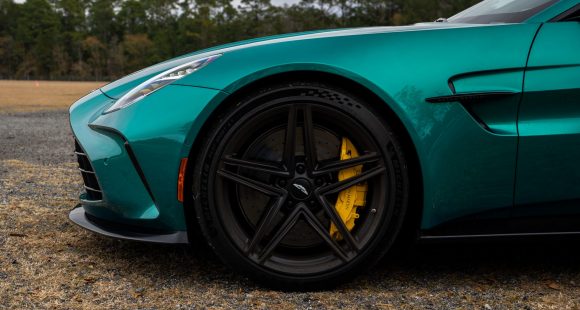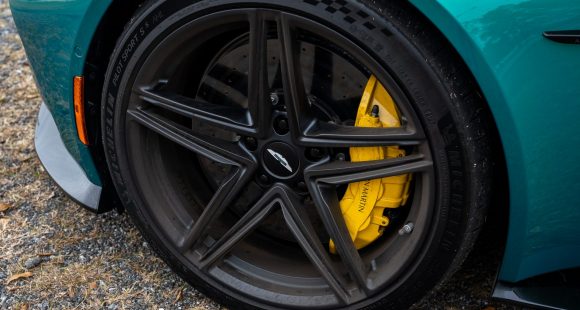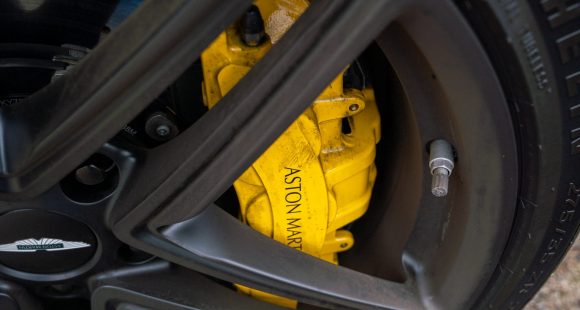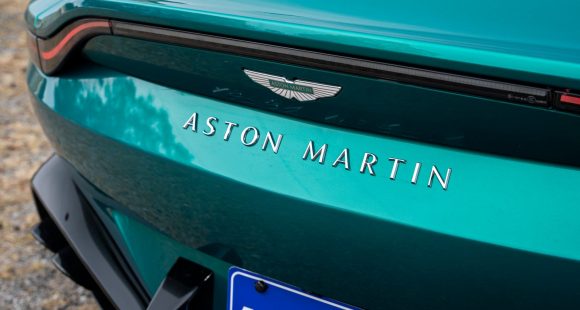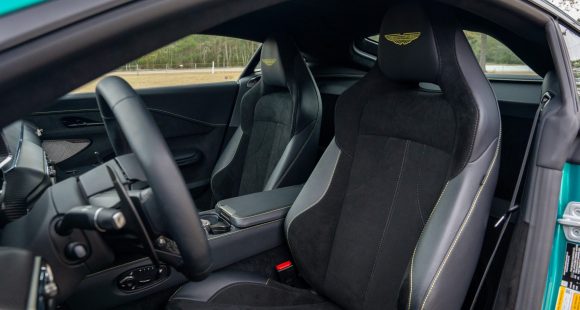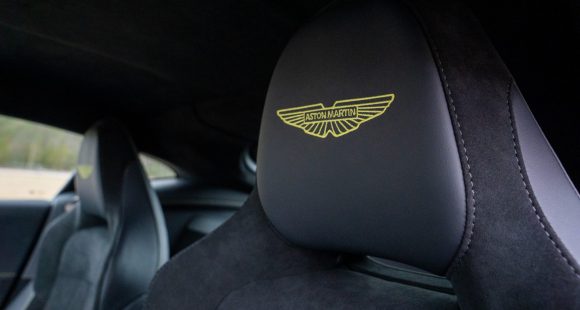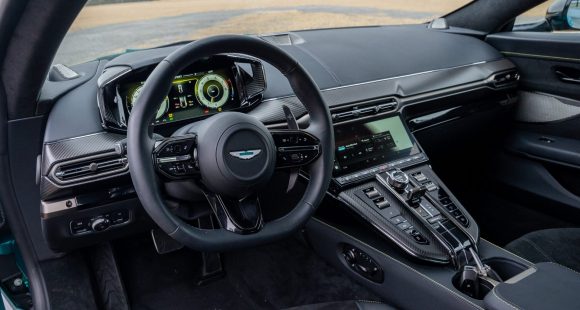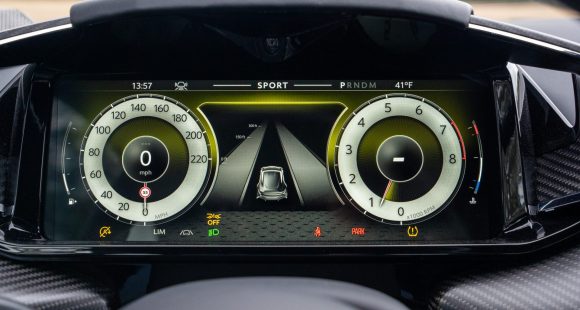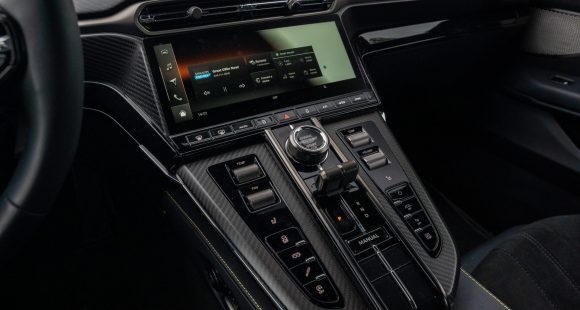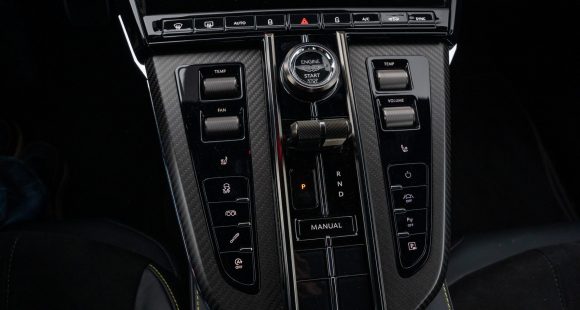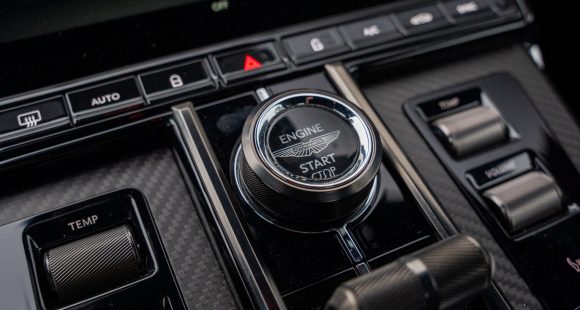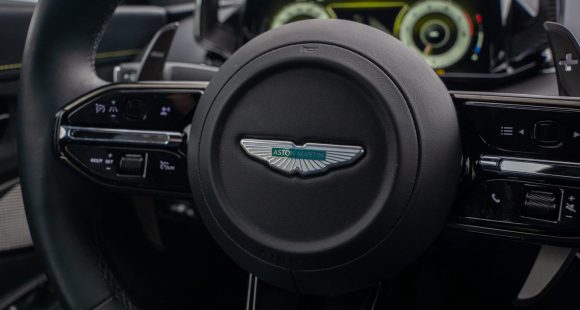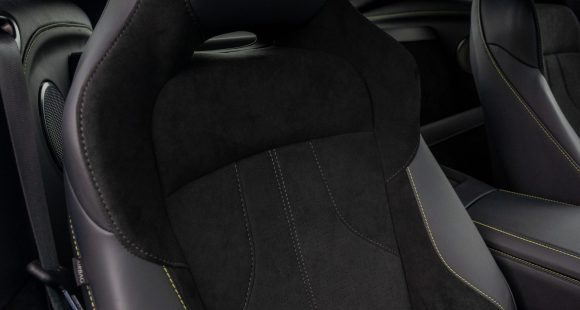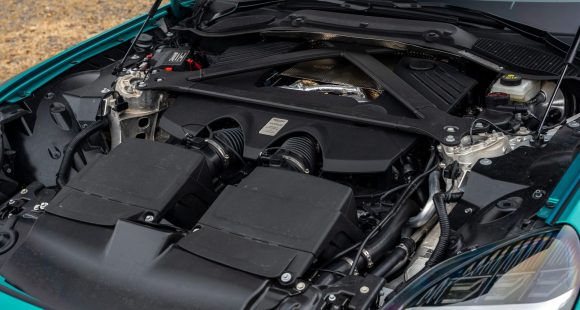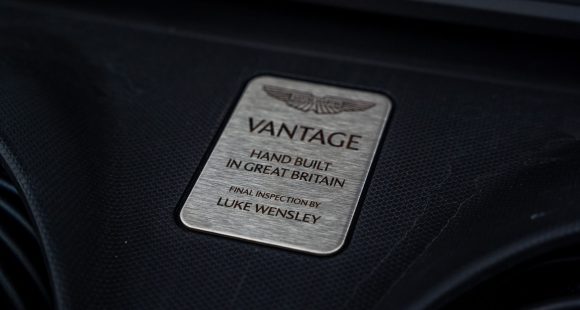The Nissan Pathfinder has an identity crisis. While always a capable family-sized SUV, Nissan could not decide on its core DNA. The first generation was truck based with body-on-frame, the second used a more car-like unitized chassis. The third generation went back to truck. Now, the all-new fourth gen Pathfinder switches again, and this time its front and all-wheel drive crossover DNA seems permanent. So, let’s see if the new genetics puts Pathfinder on course for higher sales.
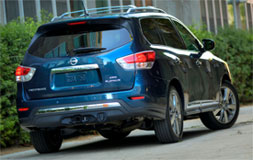 In Nissan’s tug-of-war between body-on-frame and unibody, it’s really no surprise the unitized chassis is the winner for the 2013 Pathfinder. Very few buyers want or need a super rugged 7-passenger family hauler anymore. And, besides, there’s still the ladder frame 5-seat Xterra SUV for more serious off-road wandering.
In Nissan’s tug-of-war between body-on-frame and unibody, it’s really no surprise the unitized chassis is the winner for the 2013 Pathfinder. Very few buyers want or need a super rugged 7-passenger family hauler anymore. And, besides, there’s still the ladder frame 5-seat Xterra SUV for more serious off-road wandering.
The vast majority of today’s mid-size, three-row utility buyers are far more interested in comfort, room, and a high driving position. So, for them, the new Pathfinder has all the right specs. Compared to last year, it’s actually bigger in every dimension except height. Although, behind the wheel it feels smaller; which is always a good thing no matter which member of household is doing the driving. And aides like available Around View back-up cam further lightens stressful situations.
Nissan’s latest CVT automatic transmission has a wider spread of ratios than before for better efficiency. We don’t mind it as much as we thought we would, though if you’re new to CVT’s it takes a while to get used to the additional engine noise. Making that noise, along with 260-horsepower and 240 lb-ft. of torque, is Nissan’s familiar 3.5-liter V6, which replaces last year’s 4.0-liter. A V8 is no longer available. And with that, towing takes a hit, from last year’s 7,000 to a still class normal 5,000 lbs.
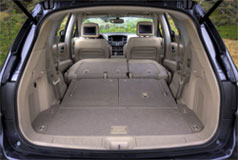 A smaller engine and more efficient CVT mean considerably improved Government Fuel Economy Ratings. Front drive ratings are class best, but even our all-wheel driver’s 19-City, 25-Highway, and 21-Combined are near the top. We averaged a good 22.3 miles per gallon of Regular in mixed driving.
A smaller engine and more efficient CVT mean considerably improved Government Fuel Economy Ratings. Front drive ratings are class best, but even our all-wheel driver’s 19-City, 25-Highway, and 21-Combined are near the top. We averaged a good 22.3 miles per gallon of Regular in mixed driving.
So, it does appear that the new Pathfinder is better in every way that matters, just don’t take it on the Rubicon, and we didn’t. But we did run it down our test track and despite a sloppy launch we were able to hit 60 in a respectable 8.4-seconds. It’s all steady engine noise and acceleration, with the quarter mile passing in 16.5-seconds at 88 miles-per-hour. Braking performance was slightly more impressive, halting the 44-hundred pound Pathfinder in a short average of 124-feet.
We were expecting the more car-like approach to show its biggest benefit in the handling department, and while it is indeed surprisingly nimble with not a lot of body roll; it is also the softest sprung Pathfinder we’ve ever driven. Combine that with traction control that is all too eager to become a safety nanny, and this Pathfinder is all about tranquil traveling.
But, it’s inside where this new Pathfinder has changed the most. It’s gone from cramped and utilitarian to spacious and plush. The level of luxury equipment available is staggering, and not far off the Infiniti JX that’s it’s based on.
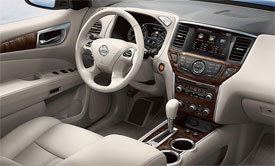 Platinum trim models come with heated and cooled front leather seating, Bose premium audio with 13-speakers, navigation, power rear lift-gate, and remote start. You can go further by adding the Platinum Premium package which enhances rear seat enjoyment with dual 7” DVD displays in the headrests and dual panorama sunroof. Like the JX, 3rd row access is great, and all seats offer true comfort for real adults. Storage capacity goes from 16 cubic-ft. behind the 3rd row to 79.8 cubic-ft. with all seats folded. And there’s additional storage space under the floor.
Platinum trim models come with heated and cooled front leather seating, Bose premium audio with 13-speakers, navigation, power rear lift-gate, and remote start. You can go further by adding the Platinum Premium package which enhances rear seat enjoyment with dual 7” DVD displays in the headrests and dual panorama sunroof. Like the JX, 3rd row access is great, and all seats offer true comfort for real adults. Storage capacity goes from 16 cubic-ft. behind the 3rd row to 79.8 cubic-ft. with all seats folded. And there’s additional storage space under the floor.
Styling reviews from our crew were mixed, but the easygoing lines and swollen fenders do portray a modern version of solid presence. The front end is now in step with other Nissan crossovers, with a large chrome trimmed grille as the centerpiece. Standard wheels are 18’s; go Platinum and you’ll ride on 20’s.
But for all of its newness, pricing remains good and competitive, starting at $29,495, while the loaded up Platinum model goes for $40,395. All-wheel-drive can be added to any trim level for $1,600 more.
Despite losing towing capacity and ruggedness, we were very impressed with the new–missioned 2013 Nissan Pathfinder. It is a vastly improved family crossover with a big jump in versatility. That’s why we selected it as our Driver’s Choice Winner as Best Large Utility of the year. The new Pathfinder has clearly taken a path that leads to happier families, and likely, bigger sales for Nissan.
Specifications
- Engine: 3.5-liter V6
- Horsepower: 260
- Torque: 240 lb-ft.
- 0-60 mph: 8.4 seconds
- 1/4 mile: 16.5 seconds @ 88 mph
- EPA: 19 mpg city/ 25 mpg highway
Long Term Updates
Mileage: 6,000Americans like to vacation large, so it’s no wonder that the redesigned, and thoroughly modern 7-passenger Nissan Pathfinder crossover is selling so well.
Our Drivers’ Choice winner for Best Large Utility has logged over 6,000 miles after only 2 months. And that time has been pretty gratifying as the strong 3.5-liter V6 CVT combo returns 24.5 miles per gallon of Regular. Plus, topping 30 on the highway is not uncommon.
While we’re not in love with the complex operation of our premium’s NAV unit, we love the 360 degree, Around View camera system. It goes well beyond normal backup cameras and we’d like to see it on all crossovers and trucks.
Mileage: 18,000In our mid-Atlantic region, fall is the in-between season for big utilities. Summer vacations are over, and you don’t yet need all-wheel drive for winter weather.
So, crossovers like our 2013 Nissan Pathfinder are doing more daily short hops than long distance running. Still, we are extremely impressed with the comfort and versatility of the Pathfinder. Why, it’s almost as versatile as…shall we say it…a minivan! Indeed a couple of passersby’s actually thought it was one.
Well, it does have three row, 7-passenger seating and a very versatile cargo floor. But, no side sliders so Pathfinder retains its dignity.
While Nissan is launching a gasoline-electric hybrid version of the Pathfinder, we can’t complain about the 24 miles per gallon of regular our all-wheel drive V6 is delivering after 4 months of use. And, with nearly 18,000 miles on its clock, there are no mechanical or even emotional issues.
Mileage: 20,500The Nissan Pathfinder is our current choice among larger, three-row crossovers. Called mid-size, yet doing many of the duties of former full-size truck based SUVs, the Pathfinder seats seven in excellent comfort.
You do pay for size with fuel economy of course, but we’re happy with our V6 Pathfinder’s average of 23.5 miles per gallon of regular. At 6 months and 20,500 miles, we’ve noticed little wear either inside or mechanically.
Mileage: 24,500Despite the need to downsize our use of fuel, there is something comforting about a larger utility like our 2013 Nissan Pathfinder, especially on long trips with the family. Our current choice among three-row crossovers, the Pathfinder seats seven in excellent comfort and can still carry quite a bit of luggage.
So, as our Platinum Pathfinder ends its stay with us, you can understand our reluctance to let it go.
Fuel economy does suffer with size, however. Still, we were generally pleased with our V6 Pathfinder’s average of 22.8 miles per gallon of regular. If you want to do better try the new Pathfinder Hybrid.
At test’s end, with 24,500 miles on the clock, we had no mechanical issues. Interior wear was minimum despite fairly severe use.
No, our Pathfinder lived up to our Drivers’ Choice selection, and we think it’s a smart choice for big family driving needs.




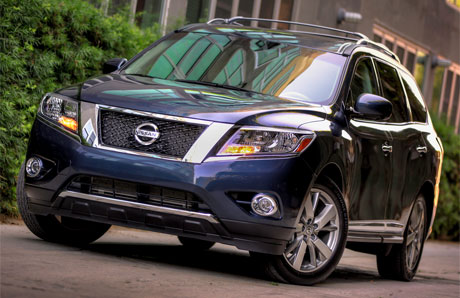


 In Nissan’s tug-of-war between body-on-frame and unibody, it’s really no surprise the unitized chassis is the winner for the 2013 Pathfinder. Very few buyers want or need a super rugged 7-passenger family hauler anymore. And, besides, there’s still the ladder frame 5-seat Xterra SUV for more serious off-road wandering.
In Nissan’s tug-of-war between body-on-frame and unibody, it’s really no surprise the unitized chassis is the winner for the 2013 Pathfinder. Very few buyers want or need a super rugged 7-passenger family hauler anymore. And, besides, there’s still the ladder frame 5-seat Xterra SUV for more serious off-road wandering. A smaller engine and more efficient CVT mean considerably improved Government Fuel Economy Ratings. Front drive ratings are class best, but even our all-wheel driver’s 19-City, 25-Highway, and 21-Combined are near the top. We averaged a good 22.3 miles per gallon of Regular in mixed driving.
A smaller engine and more efficient CVT mean considerably improved Government Fuel Economy Ratings. Front drive ratings are class best, but even our all-wheel driver’s 19-City, 25-Highway, and 21-Combined are near the top. We averaged a good 22.3 miles per gallon of Regular in mixed driving.  Platinum trim models come with heated and cooled front leather seating, Bose premium audio with 13-speakers, navigation, power rear lift-gate, and remote start. You can go further by adding the Platinum Premium package which enhances rear seat enjoyment with dual 7” DVD displays in the headrests and dual panorama sunroof. Like the JX, 3rd row access is great, and all seats offer true comfort for real adults. Storage capacity goes from 16 cubic-ft. behind the 3rd row to 79.8 cubic-ft. with all seats folded. And there’s additional storage space under the floor.
Platinum trim models come with heated and cooled front leather seating, Bose premium audio with 13-speakers, navigation, power rear lift-gate, and remote start. You can go further by adding the Platinum Premium package which enhances rear seat enjoyment with dual 7” DVD displays in the headrests and dual panorama sunroof. Like the JX, 3rd row access is great, and all seats offer true comfort for real adults. Storage capacity goes from 16 cubic-ft. behind the 3rd row to 79.8 cubic-ft. with all seats folded. And there’s additional storage space under the floor.












